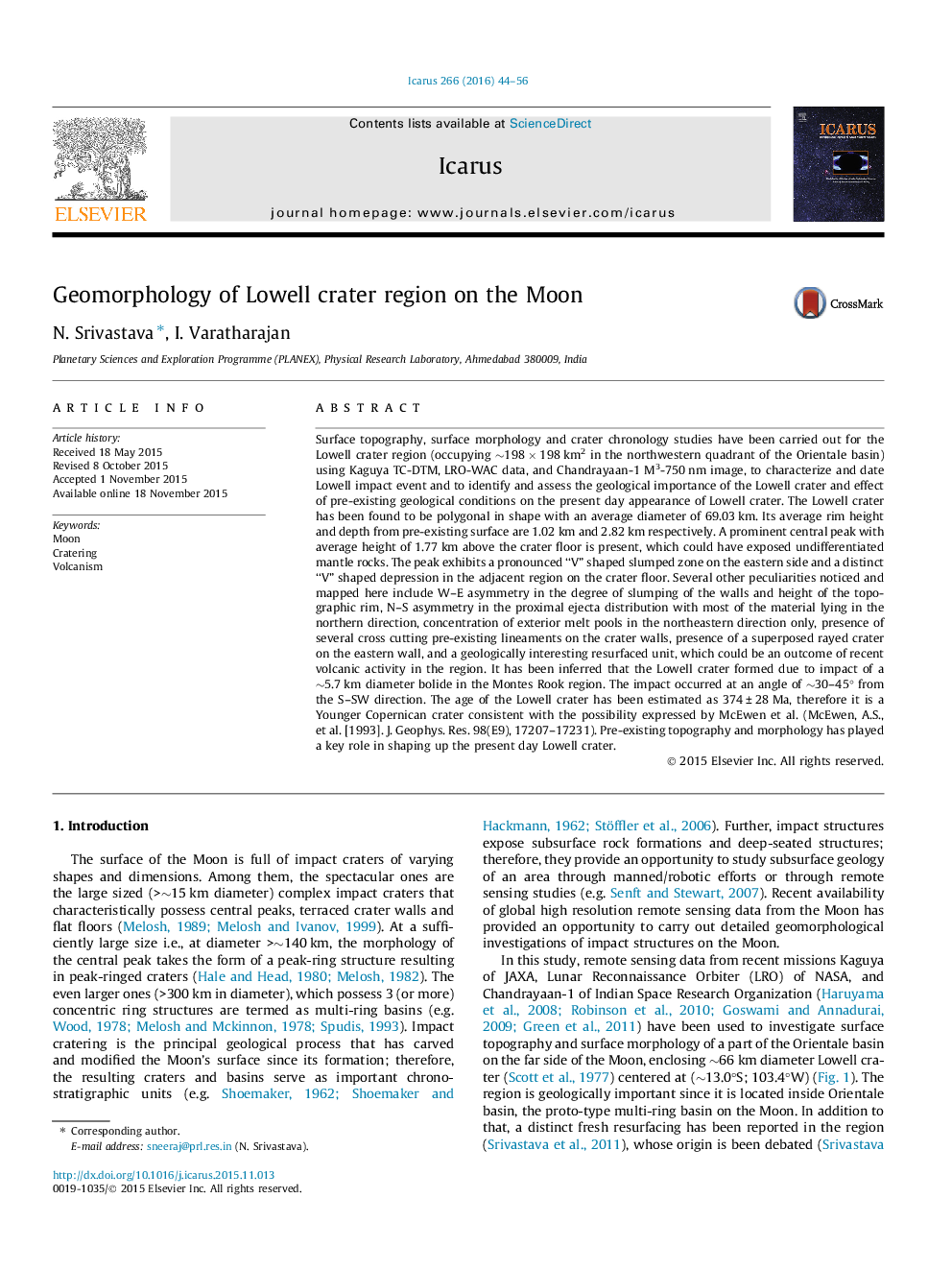| کد مقاله | کد نشریه | سال انتشار | مقاله انگلیسی | نسخه تمام متن |
|---|---|---|---|---|
| 8135669 | 1523524 | 2016 | 13 صفحه PDF | دانلود رایگان |
عنوان انگلیسی مقاله ISI
Geomorphology of Lowell crater region on the Moon
ترجمه فارسی عنوان
ژئومورفولوژی ناحیه دهانه لول در ماه
دانلود مقاله + سفارش ترجمه
دانلود مقاله ISI انگلیسی
رایگان برای ایرانیان
کلمات کلیدی
موضوعات مرتبط
مهندسی و علوم پایه
علوم زمین و سیارات
علوم فضا و نجوم
چکیده انگلیسی
Surface topography, surface morphology and crater chronology studies have been carried out for the Lowell crater region (occupying â¼198 Ã 198 km2 in the northwestern quadrant of the Orientale basin) using Kaguya TC-DTM, LRO-WAC data, and Chandrayaan-1 M3-750 nm image, to characterize and date Lowell impact event and to identify and assess the geological importance of the Lowell crater and effect of pre-existing geological conditions on the present day appearance of Lowell crater. The Lowell crater has been found to be polygonal in shape with an average diameter of 69.03 km. Its average rim height and depth from pre-existing surface are 1.02 km and 2.82 km respectively. A prominent central peak with average height of 1.77 km above the crater floor is present, which could have exposed undifferentiated mantle rocks. The peak exhibits a pronounced “V” shaped slumped zone on the eastern side and a distinct “V” shaped depression in the adjacent region on the crater floor. Several other peculiarities noticed and mapped here include W-E asymmetry in the degree of slumping of the walls and height of the topographic rim, N-S asymmetry in the proximal ejecta distribution with most of the material lying in the northern direction, concentration of exterior melt pools in the northeastern direction only, presence of several cross cutting pre-existing lineaments on the crater walls, presence of a superposed rayed crater on the eastern wall, and a geologically interesting resurfaced unit, which could be an outcome of recent volcanic activity in the region. It has been inferred that the Lowell crater formed due to impact of a â¼5.7 km diameter bolide in the Montes Rook region. The impact occurred at an angle of â¼30-45° from the S-SW direction. The age of the Lowell crater has been estimated as 374 ± 28 Ma, therefore it is a Younger Copernican crater consistent with the possibility expressed by McEwen et al. (McEwen, A.S., et al. [1993]. J. Geophys. Res. 98(E9), 17207-17231). Pre-existing topography and morphology has played a key role in shaping up the present day Lowell crater.
ناشر
Database: Elsevier - ScienceDirect (ساینس دایرکت)
Journal: Icarus - Volume 266, 1 March 2016, Pages 44-56
Journal: Icarus - Volume 266, 1 March 2016, Pages 44-56
نویسندگان
N. Srivastava, I. Varatharajan,
